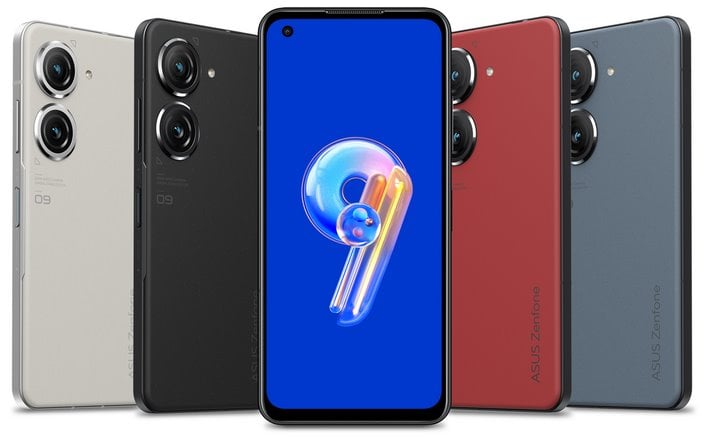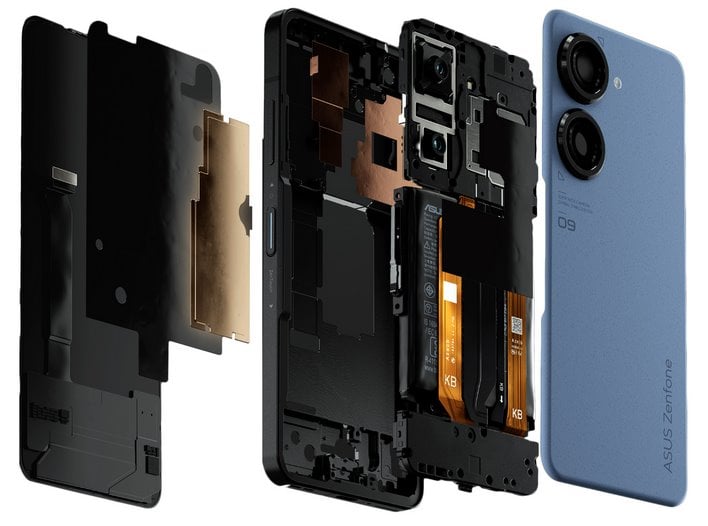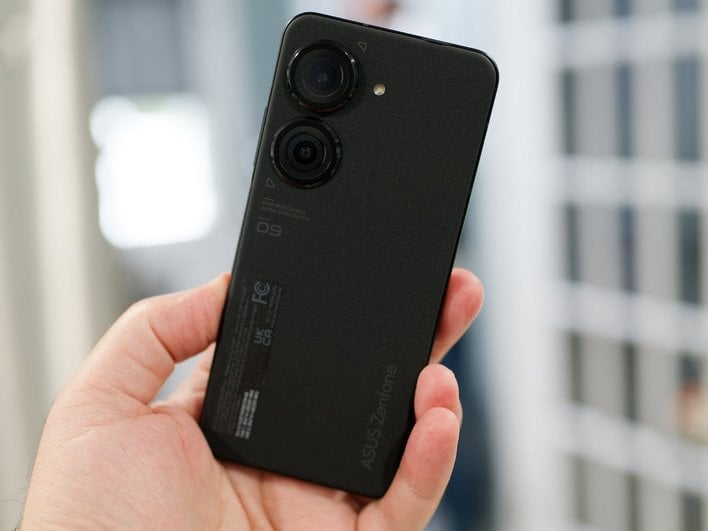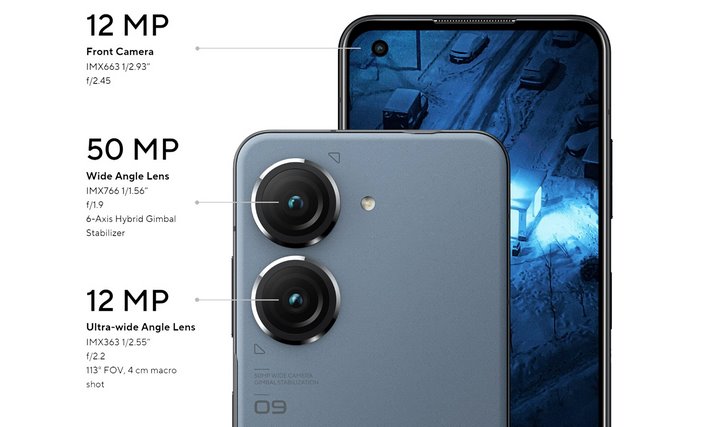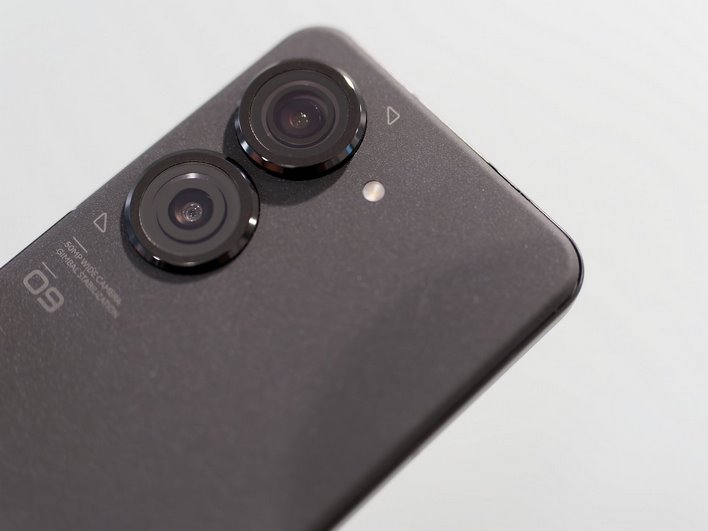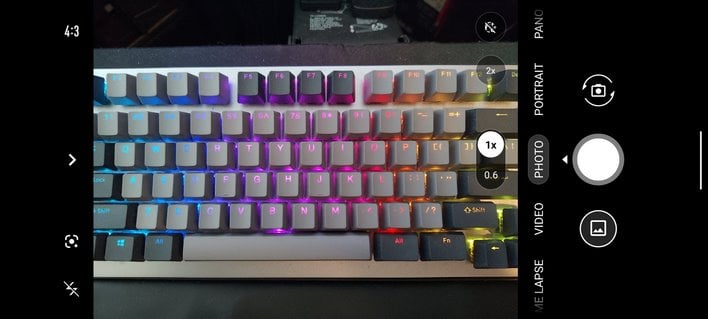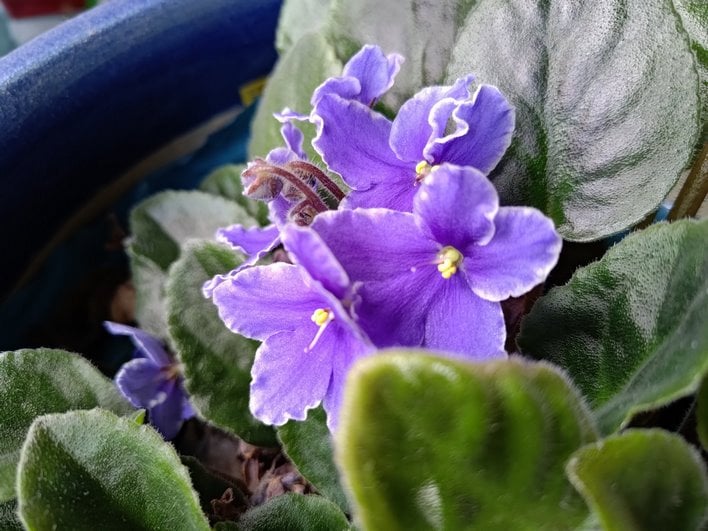ASUS Zenfone 9 Review: A Small Device With Big Performance
ASUS Zenfone 9 Review: A Powerful Flagship In A Compact Body
| ASUS Zenfone 9 - Starting At: $699 ASUS took a different approach than many competitors with the new Zenfone 9, and packed class-leading performance into a compact, svelte form factor. If you want a small, fast smartphone, the Zenfone 9 may be for you.
|
|||

|

 |
||
A large contingent of smartphone consumers have a similar list of “must have” features when shopping for a new device. On those lists, battery life, camera quality, overall performance, and the size of the device often rank near the top. Based on the direction some companies have taken as of late, you’d think everyone wants a massive device, with a huge, battery-crushing display, and enough cameras to tackle everything from Macro to Astro photography. While there are certainly folks that continually crave something bigger and badder, there are others that prefer smaller, more pocketable devices, which offer good battery life and can be operated with one hand. Those are the people ASUS is targeting with the Zenfone 9.
The ASUS Zenfone 9 is built around a leading-edge mobile platform – namely Qualcomm’s current top-end Snapdragon 8+ Gen 1 – so its performance is top-notch. It’s also one of the smaller Android devices to launch this year, at only 5.9 inches. Despite its relatively small form factor though, ASUS outfitted the Zenfone 9 with large camera sensors (for a smartphone) and a good-sized 4,300mAh battery.
All told, it’s clear ASUS is going after a select, target audience that want smaller devices, without sacrificing key features or performance. Does the Zenfone 9 fit the bill? Let’s find out...
ASUS Zenfone 9 Features And Specifications
| Dimensions | 169g, 146.5 x 68.1 x 9.1 mm |
| Operating System | Android 12 |
| Processor | Qualcomm Snapdragon 8+ Gen 1 Mobile Platform Qualcomm Adreno 730 |
| Memory | LPDDR5 16GB or 8GB |
| Storage | UFS3.1 256GB or 128GB |
| Display | 5.9-inch 20:9 (2400 x 1080) 120Hz Samsung AMOLED display, 1100 nits maximum brightness Color accuracy, Delta-E < 1, 112% DCI-P3, 151.9% sRGB color gamut Corning Gorilla Glass Victus, HDR 10 and HDR10+ certified |
| Camera modes | Photo, Video, Portrait, Pro (RAW file support, up to 32 seconds long exposure), Pro video, Light Trail(Beta)*, Panorama, Night, Timelapse, Slo-mo |
| Main Camera (Rear) | 50 MP Sony IMX766 sensor - 1/1.56" large sensor, 1.0µm pixel size, Quad Bayer technology - 12.5 MP, 2.0 µm large effective pixel size 6-Axis Hybrid Gimbal Stabilizer, F1.9 aperture, 2x2 OCL PDAF, Single LED flash, 23.8 mm equivalent focal length |
| Ultrawide Camera (Rear) | 12MP Sony IMX363 sensor - 1/2.55" sensor, 1.4 µm pixel size, F2.2 aperture, 113° field of view, Supports 4 cm macro shot Dual PDAF, Real-time distortion correction, 14.4 mm equivalent focal length |
| Front Camera | 12 MP Sony IMX663 flagship sensor - 1/2.93" sensor, F2.45 aperture, Dual PDAF, 27.5 mm equivalent to 35 mm film camera |
| Speakers | Dual stereo speakers with Dirac HD Sound, Multi-magnet stereo speakers with Qualcomm WSA8835 smart amplifiers |
| Audio Output | Hi-Res Audio 192k Hz / 24-bit standard for 3.5mm output, Qualcomm Audio CODEC (WCD9380), AudioWizard with multiple listening profiles |
| Microphone | Two microphones with OZO Audio Noise Reduction Technology |
| Video Options | Rear Camera - 8K UHD (7680 x 4320) video at 24 fps + EIS, 4K UHD (3840 x 2160) video at 30 / 60 fps + EIS, 1080p FHD video recording at 30 / 60 fps with HyperSteady, 720p HD video recordingat at 30 / 60 fps, Time Lapse (4K UHD video), Slow Motion video (4K UHD at 120 fps / 1080p FHD at 240 fps / 720p at 480 fps), Take still photo while recording video (do not support in 8K video recording) Front Camera - 4K/30fps or FHD/60fps |
| Wireless Technology | Integrated WiFi 6/6E (802.11 a/b/g/n/ac/ax, 2x2 MIMO), Supports Tri-band 2.4 GHz / 5 GHz/ 6 GHz WiFi Bluetooth 5.2 (BR/EDR + LE), supports LDAC, AAC, Qualcomm aptX, aptX HD, aptX Adaptive, aptX Lossless, WiFi Direct , NFC |
| Navigation | GNSS support GPS (L1/L5), Glonass (L1), Galileo (E1/E5a), BeiDou(B1i/B1c/B2a), QZSS (L1/L5) and NavIC |
| SIM Cards | Dual slots: 5G*+5G or 4G dual-SIM / dual-standby support, Slot 1: 5G/4G/3G/2G Nano SIM card, Slot 2: 5G/4G/3G/2G Nano SIM card |
| Network Standard | GSM/GPRS/EDGE; WCDMA/HSPA+/DC-HSPA+; FDD-LTE; TD-LTE; 5G Sub 6 SA/NSA |
| Sensors | Accelerator, E-Compass, Proximity, Ambient light sensor, Fingerprint sensor, Gyro (Support ARCore), Hall sensor |
| Battery | 4300mAh (typ) battery |
| Power Adapter | Output: +3.3-11.0 V 3.0 A, supports up to 30.0W, PD3.0 PPS / Direct Charge / QC4.0 adapter, USB power adapter (30.0 W) |
Find The ASUS Zenfone 9 At Amazon Now
As mentioned, the ASUS Zenfone 9 is built around Qualcomm’s current top-end mobile SoC, the Snapdragon 8+ Gen 1. The octal-core processor with Adreno 730 series graphics is paired to LPDDR5 memory (up to 16GB), UFS 3.1 storage (up to 256GB), and an array of sensors including an Accelerometer, E-Compass, Proximity, Ambient light, and Fingerprint sensors, a Gyro (with ARCore support), and a Hall sensor. The Zenfone 9 supports many of the latest 5G, Wi-Fi, and Bluetooth wireless connectively options as well, including Wi-Fi 6E and Bluetooth 5.2, but 5G is limited to sub-6 – there’s no mmWave support to be found, unfortunately.
The Zenfone 9 will be offered in four colors: Moonlight White, Sunset Red, Starry Blue and Midnight Black. And the device features a newly-developed textured backing material, that's lightweight and provides much more grip than the glossy or glass backs of many of today’s smartphones. Underneath that backing, the Zenfone 9 also packs an optimized cooling system. The Zenfone 9 employs a vapor chamber type cooler for its processor, linked to a copper heat spreader and graphite sheets that make contact with key components using thermal paste. Keeping a high performance processor cool in smaller form factors can be a challenge, hence ASUS outfitting the Zenfone 9 with an advanced cooling solution.
ASUS Zenfone 9 Design And Build
In terms of the overall design, the Zenfone 9 looks like your typical candy-bar, but it does have a few tricks up its sleeve. The left side of the device is mostly bare, save for few segments to accommodate the antenna system. The bottom houses a dual-SIM tray, along with speaker and microphone ports, and a USB-C port. At the top resides another microphone port and a 3.5mm audio jack – yes, an actual audio jack – and on the right you’ll find a volume rocker and power button/lock button. That power/lock button, however, also doubles as a fingerprint sensor and a slider/virtual scroll-wheel of sorts with gesture support for scrolling or navigating through long web pages, etc, with just a flick of your thumb.The front of the Zenfone 9 is effectively all screen, save for a tiny sliver of a speaker grille at the top and the punch out for its 12MP selfie camera. The display is a 5.9-inch (2400 x 1080 native resolution) Samsung AMOLED, with a 20:9 aspect ratio, 120Hz refresh rate and maximum brightness of 1100 nits. According to ASUS the display offers an excellent Delta-E < 1, with 112% DCI-P3 and 151.9% sRGB color gamut coverage. It is also HDR10 and HDR10+ certified and protected by Corning Gorilla Glass Victus. The display on the device is excellent, with accurate color reproduction and good viewing angles, and a fast enough refresh rate to keep animations and video looking buttery smooth.
The speakers on the Zenfone 9 are also quite good. Though there’s only so much volume and bass you’re going to get out of tiny smartphone drivers, the overall sound quality is a notch above most other phones in this class.
The Zenfone 9 is also IP68 certified for water and dust resistance, and the whole kit is powered by a 4,300mAh battery. ASUS includes a 30-watt charger with the Zenfone 9, which is capable of charging the device relatively quickly, but unfortunately wired charging is the only means to top-off the phone – the Zenfone 9 doesn’t support wireless charging. That’s a bit of a bummer, but probably isn’t a deal breaker for most users.
ASUS Zenfone 9 Camera System
Which brings us to the back-side of the device. The back of the Zenfone 9 is home to a dual-camera array. Complementing the front-facing 12MP camera (Sony IMX663 1/2.93” sensor, f/2.45) are rear 50MP wide-angle and 12MP ultra-wide angle cameras. The 50MP camera uses a Sony IMX 766 sensor (1/1.56”), has an f/1.9 aperture, and it features a new 6-Axis Hybrid Gimbal Stabilizer, electronic image stabilization (EIS) and fast autofocus technology. The 12MP camera uses a Sony IMX363 sensor (1/2.55”) and has an f/2.2 aperture and 113° field of view. The ultra-wide angle camera also has a short 4mm minimum focus distance, which can be used for macro photography. Notably absent, however, is a telephoto shooter. If you want to capture telephoto focal length, you’re limited to cropping images from the main sensor or using digital zoom.The camera app on the ASUS Zenfone 9 will look familiar to anyone with a current-gen Android device. The app is straightforward and easy to use and offers support for numerous capture modes including Light Trail mode (which is still in Beta) and Night, Pro, Panorama, Slow Motion and Time-lapse modes. Of course, a full manual mode is also available for those that want to dial in all of their settings manually.
The Zenfone 6’s cameras perform very well, especially the main shooter, thanks to the larger sensor and advanced stabilization system. Even if you don’t have the steadiest hands, the Zenfone 9 is capable of capturing sharp, in focus photos.
We found the Zenfone 9’s cameras to be above average; they capture fine detail with accurate colors, though the images are somewhat undersaturated for our tastes. That’s a subjective thing though, and is easily fixed with a few seconds of editing.
We found the computational portrait mode to work particularly well on the Zenfone 9 and images captured in good lighting look particularly good. In challenging lighting conditions, however, the device does a little too much processing and sharpening for our tastes.
In both the shot of our pup and daughter, the light coming in from the door or window would look blown out upon initially composing the images, but once the scene is metered, and the device records the frame, detail is visible throughout. Keeping fine detail is an obvious plus. The fur and skin tones, however, look somewhat over-processed to our eyes – at least when pixel peeping. For social media sharing they’re more than adequate. And, once again, a little work in post or dialing in settings beforehand would go a long way.

